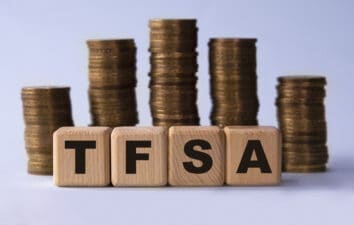After years of being a political football, Canada’s Liberal government crafted a historic agreement this week with eight of the country’s 10 provinces to implement a “modest” expansion of the Canada Pension Plan (CPP).
The holdouts are Quebec, which has always administered its own mirror-image Quebec Pension Plan, and Manitoba, which abstained. What it means is that once fully implemented, those who choose to collect CPP benefits at the traditional retirement age of 65 will receive as much as $17,478 a year compared to $13,110 right now.
That assumes someone has maxed out on the earnings ceiling (known as the Year’s Maximum Pensionable Earnings, or YMPE) on which CPP benefits are calculated, which is currently $54,900 a year. The many Canadians who earn less than that will receive correspondingly less.
A key feature is that by 2025 this earnings ceiling will rise to $82,700, which means that those earning that kind of money will pay higher premiums but ultimately receive more benefits in retirement. Obviously, those who make less than that will pay lower premiums and receive lower benefits.
This will involve a seven-year phase-in period that begins in 2019, which is why the impact will be negligible for those who are already retired or baby boomers expecting to do so in the next few years. But it will have a dramatic and positive impact on their children, the Millennial generation, as well as the older Generation X.
The new regime will entail higher premiums paid by both employers and their employees; employers will pay roughly $408 a year more a year in premiums for each employee, and workers will pay a matching amount.
Someone at the current $54,900 ceiling will pay an extra $7 a month by 2019, which will rise to $34 a month by 2023. But benefits will rise accordingly as the ceiling rises. Previously, CPP was designed to “replace” about 25% or earned income in retirement, while the new system should be able to replace about a third.
Not everyone is happy with the CPP expansion, which the Liberal government pushed long before the election. Industry associations like the Canadian Federation for Independent Business (CFIB) are crying the blues over these higher “payroll costs.” For them, the contribution rate will rise by about 20% from the current 9.9-11.9% of pensionable earnings (half is paid by the employer and half by the employee, but ultimately, of course, the employer is paying both halves. The self-employed will have to pay both halves of the higher amount).
However, this slight increase is not what I would call a payroll tax, but is in reality forced savings that will eventually return to the employee, so in the long run this will be a good thing for young workers. After all, few young people will be able to count on the kind of gold-plated “Defined Benefit” pension plans that government workers, politicians, and many members of unions enjoy today.
Even if they can find employers offering such plans, millennials will probably change jobs so often that they’d be better served with a combination of Defined Contribution plans, saving in RRSPs and TFSAs, and, of course, now the expanded CPP. The other programs put them at investment risk or makes them vulnerable to poor decisions; the CPP at least will assure them of an annuity-like, inflation-indexed guaranteed return in their old age.
One silver lining in the announcement is that as a result of the agreement, the province of Ontario has scrapped its controversial ORPP, or Ontario Retirement Pension Plan, which CFIB president Dan Kelly termed “the CPP’s far uglier cousin.” The ORPP would have imposed even higher payroll costs on employers and really was just a way for the province to pressure Ottawa into expanding CPP.
If $17,478 a year sounds attractive, consider that the amount could be even higher for those who choose to defer receiving benefits to as late as 70. According to Doug Runchey of DR Pensions Consulting, benefits are roughly 8% higher for every year after 65 you wait to as much as 42% higher at age 70. Conversely, you can also receive “early” benefits before 65 and as early as 60, but they will be proportionately reduced.
This wasn’t apparent in the initial media coverage of the CPP expansion, but it’s unlikely they would depart from a similar arrangement. In any case, the Liberals are still in the first year of a four-year majority, so there’s not much people can do to change things at this point.
To be sure, there are some contradictions, like the decision to push back the Old Age Security (OAS) commencement age to 65 from 67 or lowering the annual limit on TFSAs to $5,500 from the $10,000 level the Conservatives had established.
The higher TFSA limit would nicely have complemented an expanded CPP, but the TFSA is something that came too late for most boomers. That’s also true with the CPP expansion, but we should celebrate the fact that young people can look forward to a more secure retirement.









